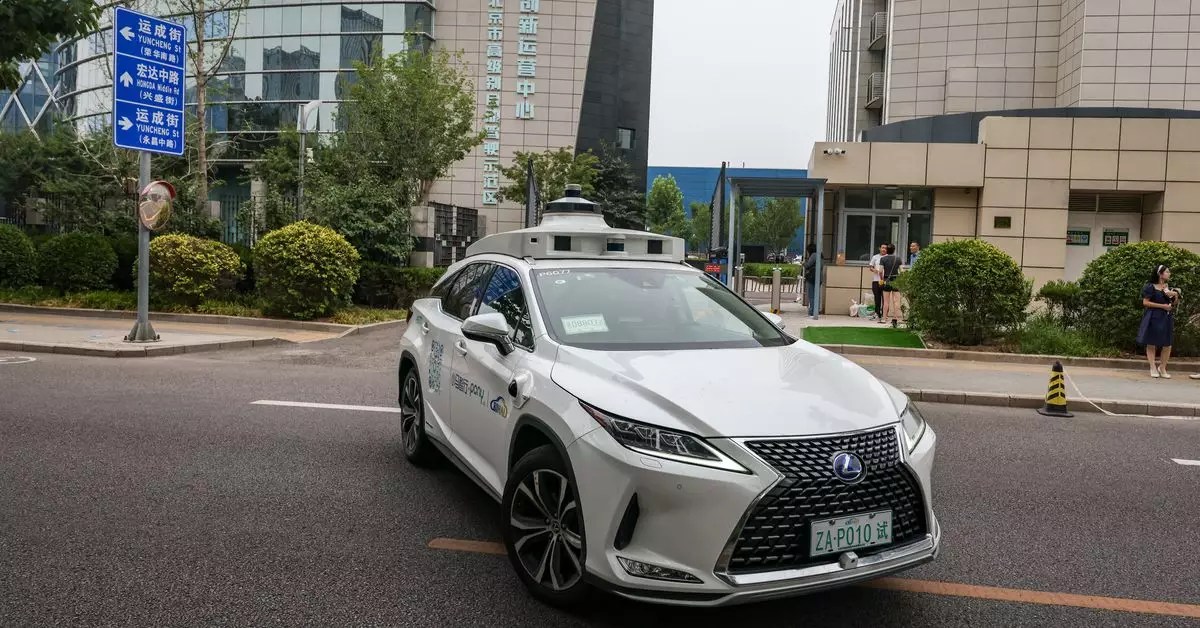The rapidly evolving landscape of autonomous vehicles (AV) presents a glaring divergence between the ambitions of American companies and the fervent advancements seen in China. As one of the critical players in this sector, China’s Pony.ai has announced plans to significantly grow its robotaxi fleet, a stark contrast to the woes experienced by General Motors with its venture into autonomous ride-hailing. This article delves into the implications of these contrasting trajectories in AV development, the regulatory challenges faced by U.S. companies, and the broader geopolitical context surrounding them.
Pony.ai’s strategy to ramp up its robotaxi fleet from approximately 250 to 1,000 vehicles by 2025 highlights a robust approach to scaling operations. This ambitious goal is facilitated by a collaboration with GAC Aion, a significant automotive division in China, indicating a well-coordinated effort to leverage local resources for growth. Current data shows Pony.ai’s fleet averages about 15 rides per vehicle daily, translating to over 26,000 rides weekly. This impressive utilization is reflective of both a readiness in consumer acceptance of autonomous services and a strategic focus on major urban areas such as Beijing and Shanghai.
What sets China apart from the U.S. in this race is not merely the number of vehicles but also the regulatory ambiance. The Chinese government has fostered an environment conducive to rapid deployment and testing of autonomous technologies, buoyed by state incentives and a strong domestic electric vehicle (EV) supply chain. Companies like Baidu are also following suit, reducing vehicle costs in order to make autonomous EVs more accessible to the market. This stark difference in regulatory landscape poses challenges for U.S. automakers looking to attain similar momentum.
While Pony.ai climbs on the upward trajectory of expansion, the U.S. faces setbacks. General Motors’ recent withdrawal from funding its struggling robotaxi venture, Cruise, reflects a broader trend among American manufacturers, with Ford also scaling back on its Argo AI project in partnership with Volkswagen. Both companies are pivoting their strategies back towards developing advanced driver-assist technologies rather than fully autonomous vehicles, signaling a retreat in what some might see as a critical technological competition against international rivals.
The U.S. government, increasingly wary of China’s advancements in technology, has proposed regulations aimed at safeguarding national security. These include prohibitions on the sale or import of certain connected vehicle software from China, further solidifying a trend of protectionism that could stifle growth and innovation within American municipalities. The imposition of tariffs on Chinese imports, including EVs, presents additional economic barriers that might slow local development of autonomous technologies, which rely crucially on affordability and accessibility of components.
Despite the aggressive expansion of companies like Pony.ai, it is essential to consider the broader economic landscape. No global AV operator has achieved profitability yet, highlighting an inherent paradox in the quest for advancement. Operators face high overhead costs, limited growth in fleet size, and the challenging economics surrounding AV technology that often outpace revenue growth. Pony.ai, for instance, was recently valued at $5.25 billion—down significantly from its $8.5 billion valuation just two years prior. This financial reality underscores the precarious balance between ambition and economic sustainability in the field of autonomous vehicles.
Some hope remains for American firms, with discussions underway about devising a federal framework to permit wider deployment of self-driving cars—yet these deliberations have faced delays. For the legislation to find traction, it must overcome significant hurdles, such as disagreements over state regulations and concerns pertaining to liability. Cities also voice their qualms about safety and the practicality of integrating a greater number of autonomous vehicles into already crowded urban infrastructures.
China’s position as an early leader in the robotaxi market introduces a pressing urgency for the U.S. to rethink its strategy in AV development. With local companies scaling operations and the government supporting their initiatives, the question remains: will American policymakers act swiftly enough to close the gap, or will the U.S. lag further behind as the AV landscape unfolds? Communities from San Francisco to Washington face a crucial decision, balancing innovation and safety in the ever-evolving transport environment.
As the race intensifies, it becomes increasingly apparent that the global competition in autonomous vehicles is not just about technology itself, but also about the regulatory environments and market strategies that enable or impede progress. The future of autonomous vehicles will likely depend on both technological advancements and the political will to support innovations that can maintain American competitiveness in a rapidly globalizing market.


Leave a Reply